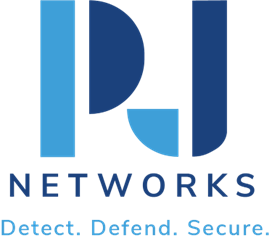How PJ Networks Simplifies Complex Firewall Configurations
It’s funny how some things come full circle. I started as a humble network admin back in ’93. Those were the days of networking and mux for voice and data over PSTN—remember those? Fast forward a few decades, and now here I am, leading PJ Networks in helping businesses secure their digital fortresses. Nothing gets me quite worked up like discussing cybersecurity, especially after my third coffee, even more so when I get back from DefCon still buzzing (artificial intelligence everywhere). So, let’s dive into something even seasoned professionals scratch their heads over: complex firewall configurations. But you don’t have to worry—PJ Networks has got you covered.
Introduction
Firewalls are one of those unsung heroes of network security—much like seatbelts in a car, they protect us silently without demanding appreciation. Still, if not configured properly, they can become your network’s worst enemy. I’ve seen it all—a firewall misconfiguration can lead to security loopholes and unnecessary downtime (something we all dread).
Common Configuration Challenges
Here’s the thing: Firewalls are as complex as any technology can get, especially when dealing with configurations in large-scale deployments such as banks or multinational corporations. These challenges come in many forms:
- Policy Overload: Multiple overlapping security policies.
- Configuration Drift: Changes over time that are poorly documented.
- Comprehensibility: Complex rules that become hard for teams to interpret.
- Patchwork Security: Inconsistent configurations across different systems.
But there’s a simple solution—strategy. And a bit of expertise. (Not to toot my own horn—okay, maybe a little.)
Our Simplified Approach
At PJ Networks, simplifying firewall configurations begins with clear strategies and comprehension of security objectives. Over the years, through trial and error, and yes—some blunders, I’ve crafted a streamlined approach:
- Clarity in Policy Development: We prioritize streamlined and clear security policies rather than a patchwork of vague settings.
- Regular Audits: We perform routine firewall audits to prevent configuration drift and catch misconfigurations early.
- Documentation: Comprehensive documentation acts as a guidebook, especially when onboarding new network security teams.
- Zero Trust Architecture: Recently, I helped three banks integrate a robust zero-trust strategy—giving their firewall architecture an extra layer of security.
- Tailored Training: I believe in equipping teams with practical training sessions so they truly understand why their firewall speaks the language it does.
Now, of course, all this is in simpler terms and real-world implementation involves lots of late nights (and coffee).
Case Study
Let me take you through a recent case that illustrates how PJ Networks tackles complexity. A leading bank felt overwhelmed by their layered firewall architecture. Performing updates or changes felt like walking a tightrope without a safety net. (And who wants that level of stress?)
We got to work promptly:
- Assessment: First, we performed a detailed analysis of all current policies and configurations.
- Strategic Realignment: We proposed a solidified security policy plan. No more duplication and way less room for human error.
- Zoning and Segmentation: We demarcated network areas ensuring controlled access and heightened security.
- Training: Conducted a hands-on workshop explaining procedures and how *everyone* from the admins to the C-suite could play a part in maintaining security.
The result? A fully optimized, streamlined firewall setup and a much more relaxed IT department.
Conclusion
Firewalls are like that great sous-chef in a kitchen—they take the heat off the enterprise (pun intended) when it comes to managing network security. But without the right configuration, they could bring your whole dish (or network) down. At PJ Networks, we believe in simplifying these complex mechanisms, ensuring they defend effectively while allowing business to flourish uninterrupted.
Quick Take:
- Firewalls need clarity—your policy should be driven by efficiency, not quantity.
- Stay vigilant with regular audits to avoid drift.
- Documentation and training are your friends (really).
- Zero Trust can significantly strengthen firewall security—consider it seriously.
And there it is, folks. Worth a read before you take your next big bite into firewall configurations! Remember, at PJ Networks, making the complex seem effortless isn’t just a job, it’s a passion.
